A true revolution occurred in Bolivia in 1952. The Bolivian people, led by the miners rose against the military junta to prevent the Movimiento Nacionalista Revolucionario from taking office.
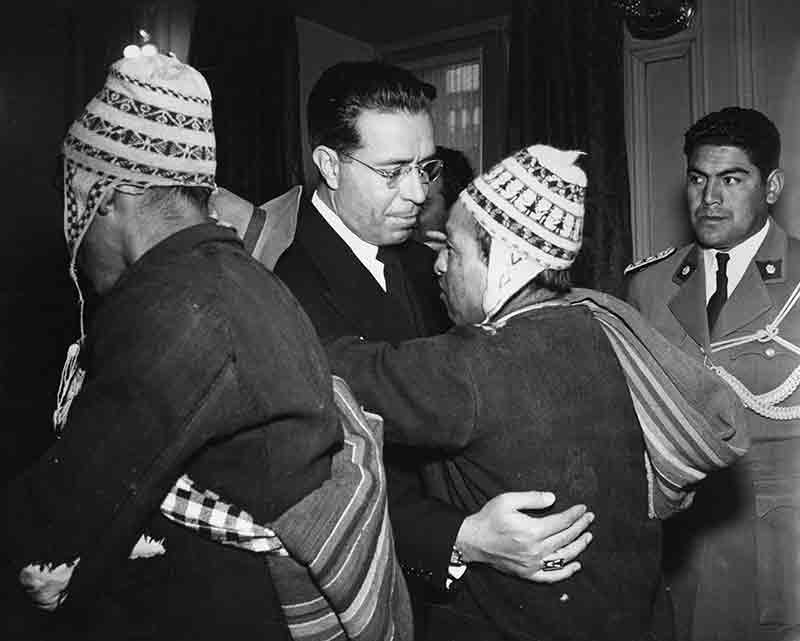
The traditional South American greeting, here between President of Bolivia, Ángel Víctor Paz Estenssoro and mine workers. In his first presidency (1952-56), the tin mines - Bolivia's main source of income - were nationalised, a wholesale land reform was implemented, and universal suffrage was introduced.
Coming from the haute bourgeoisie, and a family of landowners, Paz Estenssoro was an unlikely revolutionary leader. A lawyer and economics professor, he was called Bolivia's "first technocrat".
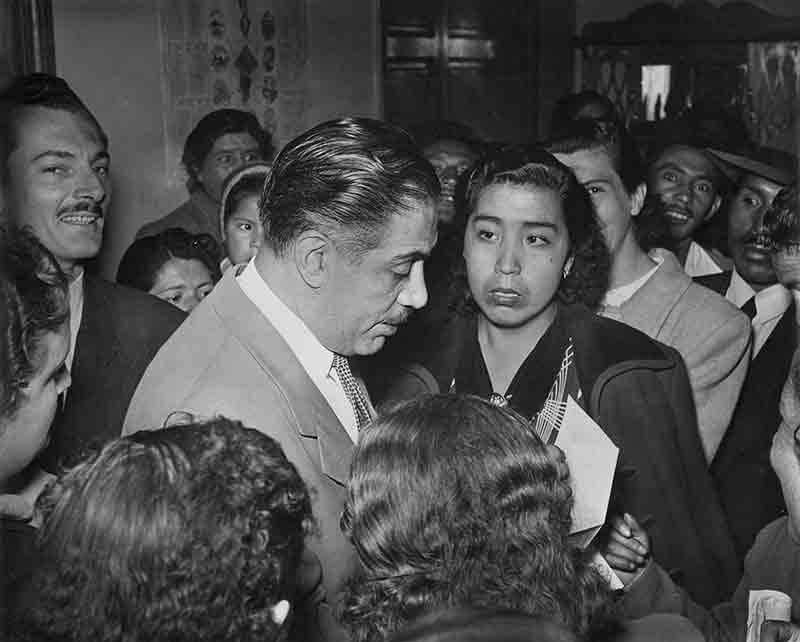
Juan Lechin, former miner and Football Star, infamous and famous for his many love affairs. Called the Spinx of the Bolivian Government, by others the ticking time bomb, had many followers, especially in the left wing of the indian nationalist movment.
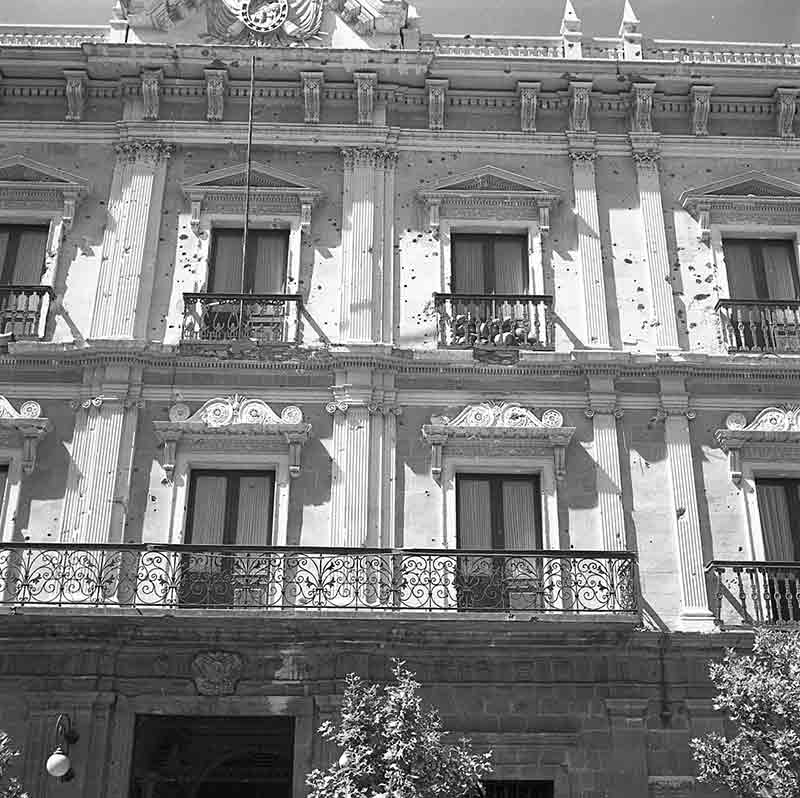
The presidential palace in La Paz showed the destruction of the revolution of April 1952. Sandbags and behind them machine guns revealed the uncertainty that still prevailed at that time. No one knew better than the ruling party how important it was to defeat the palace. It was a tradition, whoever conquered the palace ruled the country.
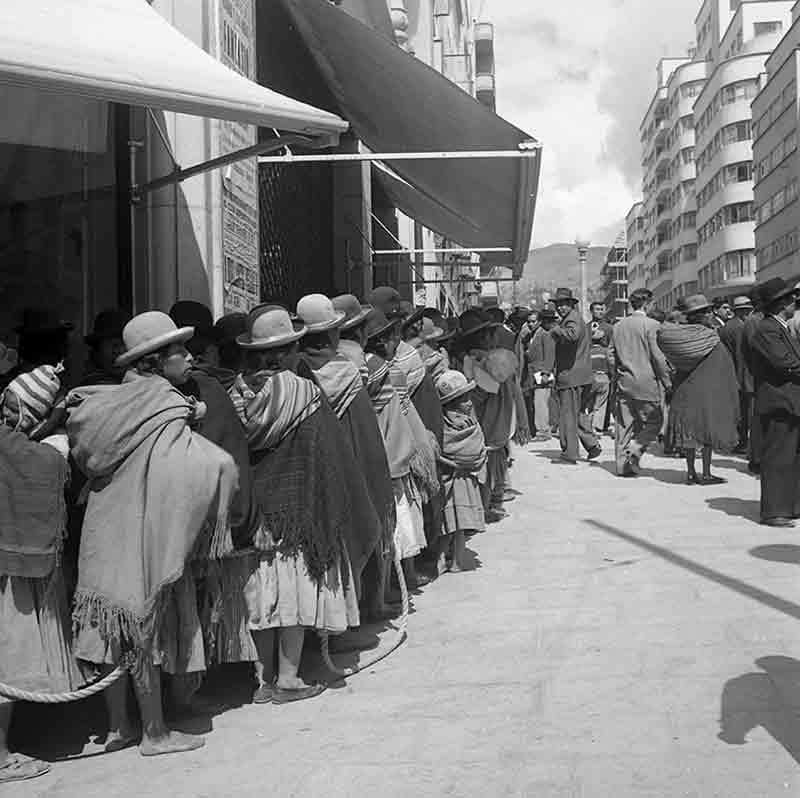
For days the indigenous people waited in front of the main office of the MNR to register as members. On the picture on the right you see the US Embassy in La Paz.
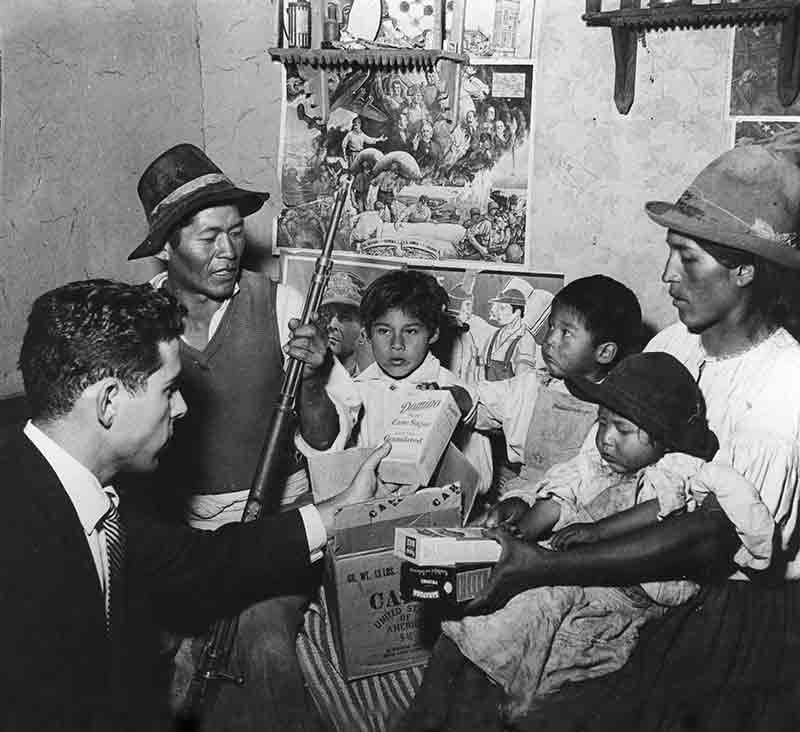
The care package is received with a bit of suspicion in this sparse hut of a Miner's Family. Since the government had armed the Indios and miners, a firearm was part of the household.
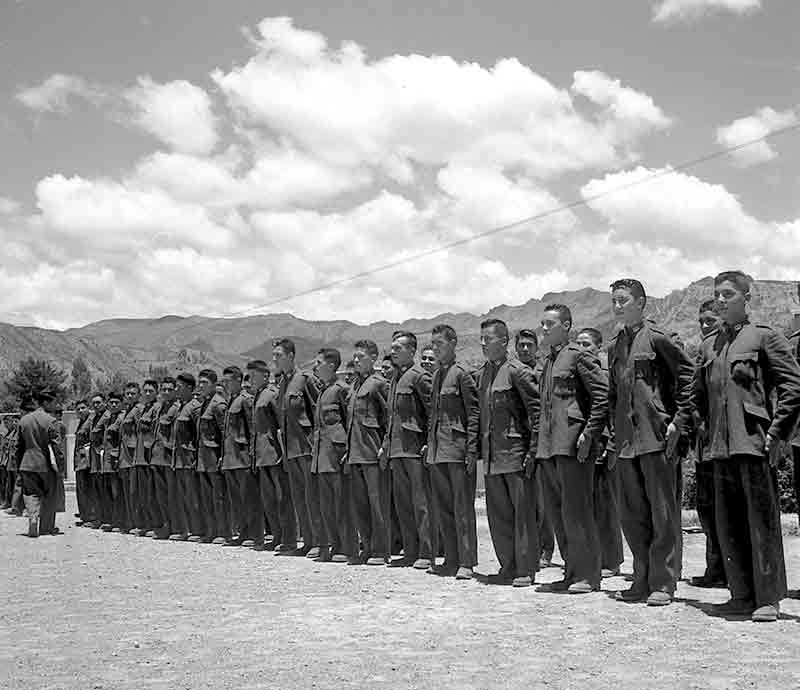
The hated army was re-established in 1953, and was built over the years into a formidable force. While the government posed as anti-imperialist, it worked hand in hand with the US State Department.
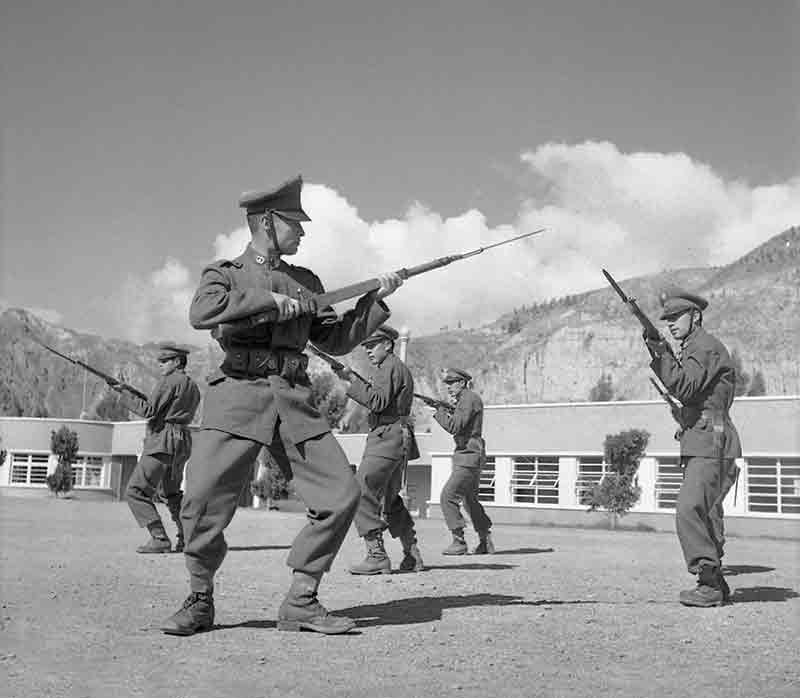
The officers of the new military were trained in the School of the Americas.
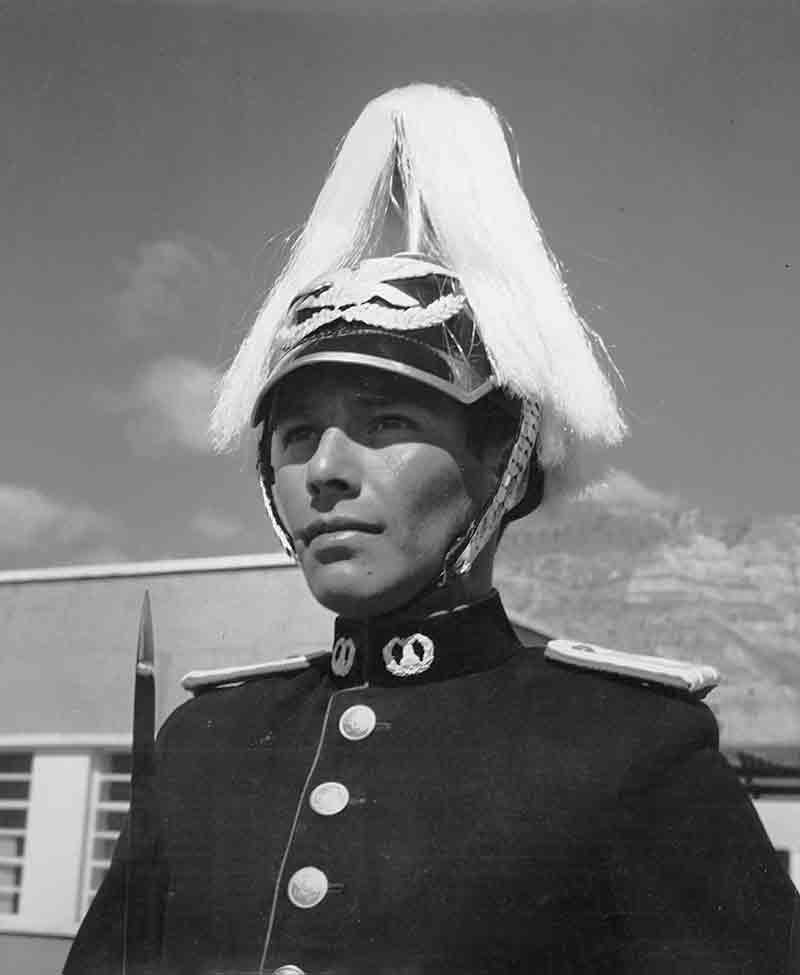
The once German-trained army had been completely disbanded after the 1952 revolution. As soon as the MNR came to power, a new political philosophy began to train the young cadets.
As a reaction to the threat they felt from the well-armed miners and Indian field workers. The picture shows a young cadet in the traditional Bolivian army outfit. A copy of the old German uniform from the First World War.